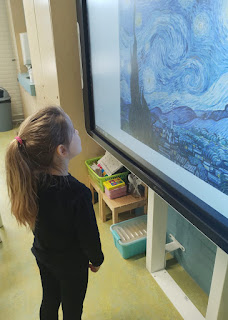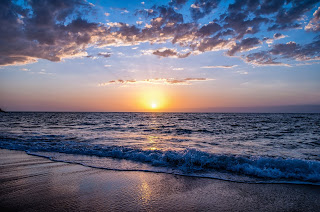You need:
- drawing sheets A4 size
- charcoal
- paper towels
- black construction paper for background
Show these two paintings. What do you see? Where are the dark parts, where the light ones? Why is that? What's the artists goal? What do you feel when you see these paintings?
Students sit in pairs facing each other and create a portrait of each other using hatching and swiping techniques. Of course the background is dark, the face light.



















































